All The Focus Is On A.I.

Photo by Steve Johnson on Unsplash
For those invested in the stock market and listening to the daily news, it is hard not to hear the discussion about Artificial Intelligence (A.I.) A.I. seems to influence most aspect of the economy; thus, it has implications for companies and their stock price. First, I ask Microsoft’s (MSFT) Copilot, its artificial intelligence search engine, what is A.I. Its response,
“Artificial intelligence (AI) is the field of computer science focused on creating systems that can perform tasks typically requiring human intelligence. These tasks include reasoning, learning, decision-making, problem-solving, and even understanding language or recognizing patterns.”
A.I. is perfectly suited for processing many tasks which makes A.I. potentially transformative for business operations. The machine models have billions, if not trillions, of parameters accessed to evaluate the data. This need for enormous computing resources has led to the growth of data centers that house the computer infrastructure for these systems. The next sections below outline the growth in data centers along with the associated energy demand. The concluding section highlights the concentration of stocks that comprise major stock market indexes and the overall market valuation.
A.I. Leading to Data Center Growth
The significance of the A.I. definition is the fact these tasks require a large amount of computer memory and electrical power to process the data quickly and efficiently. This aspect of the A.I. revolution has led to a heightened focus on companies building data centers, Microsoft, Alphabet (GOOGL), Amazon (AMZN) to name a few and companies providing chips to the computers processing the data, for example Nvidia (NVDA), ARM, and Broadcom (AVGO). A few of these leading companies have become known as the Magnificent 7 (MAGS) stocks.
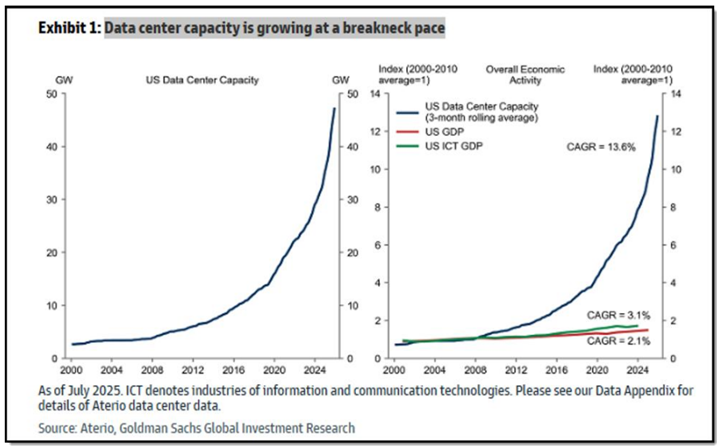
The growth in data center capacity is beginning to look much like the growth of optical fiber capacity in the run up to the technology bubble in 2000.
(Click on image to enlarge)
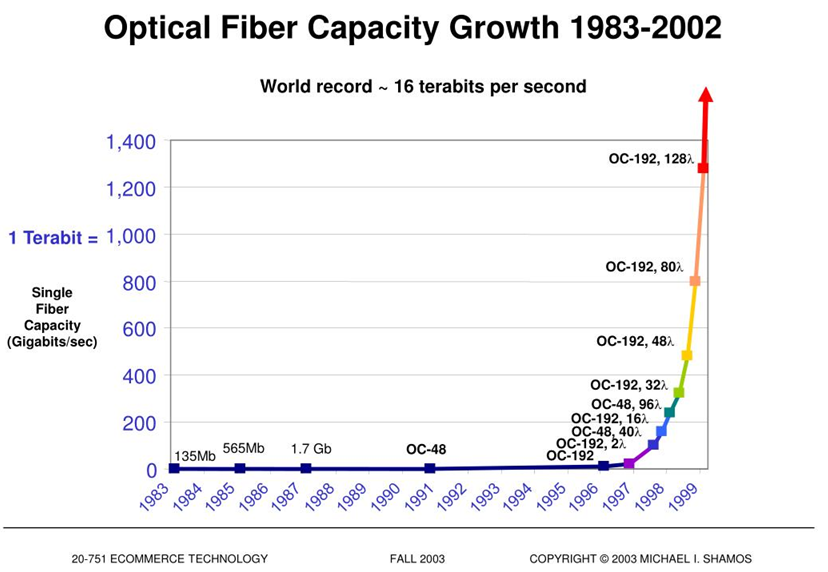
In the lead up to the technology bubble bursting, in the case of optical fiber capacity growth, the leading company was Corning (GLW). Once the market determined too much capacity had been built, the stock price collapsed.
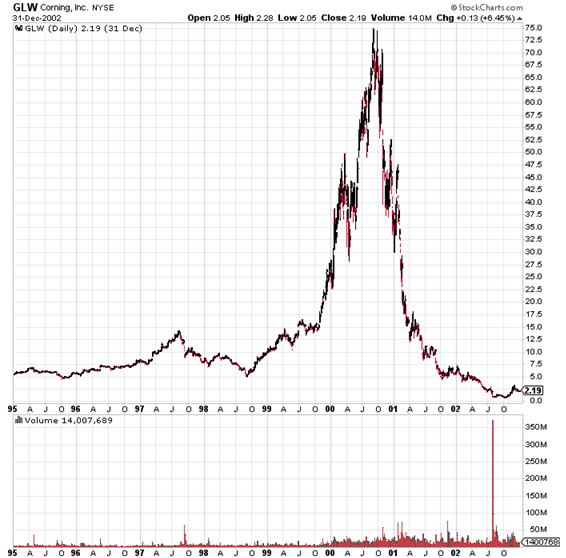
Powering the Data Centers
A critical link in data center growth is access to abundant energy sources to meet the electricity demands of computers that process the data inquires. The demand for electricity has led the utility sector as being one way to invest in the expansion of A.I. As of September 30, 2025, the Utility Sector in the S&P 500 Index is one of the leading sectors from a performance perspective, up almost 18% this year. Critical to the generation of electricity is the fuel the utility companies use to create electricity, coal, natural gas and nuclear (uranium). A utility that provides a majority of its electricity via nuclear power, Constellation Energy (CEG), has been a strong performer as A.I. and data center growth have grown. Through September 30, CEG stock is up nearly 48%, far outpacing the growth in the S&P 500 Index, up 13%. The demand for electricity has led to higher electrical prices, a consequence of A.I. and data center growth. The below chart shows the consumer price index, inflation, for electricity in the U.S.
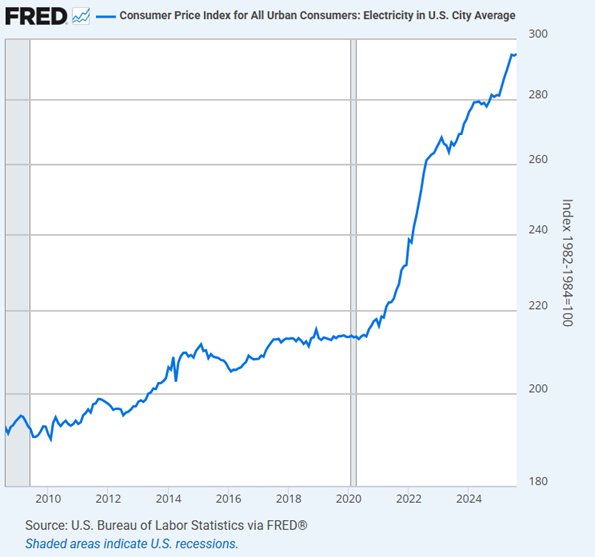
Is A.I. Over Exposed In Equity Indexes?
Given the heightened focus of stocks that are associated with the artificial intelligence revolution, some are comparing growth in A.I. to the industrial revolution and leading has led to a handful of companies becoming outsized in some of the equity indexes. As the next chart shows, just three sectors and industries account for nearly 45% of the weighting within the S&P 500 Index., technology, media and telecommunications.
(Click on image to enlarge)
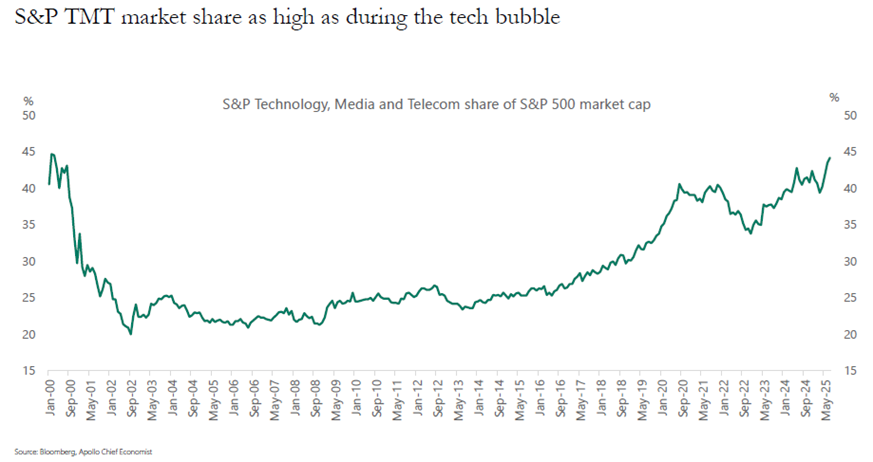
In addition to the concentration of A.I. stocks in indexes like the S&P 500 Index, the valuation of these stocks has pushed the valuation of the index to elevated levels. The below chart shows the Price to Sales ratio for the S&P 500 Index, a valuation measure, and this ratio is at a high, surpassing the technology bubble high of 2000.
(Click on image to enlarge)
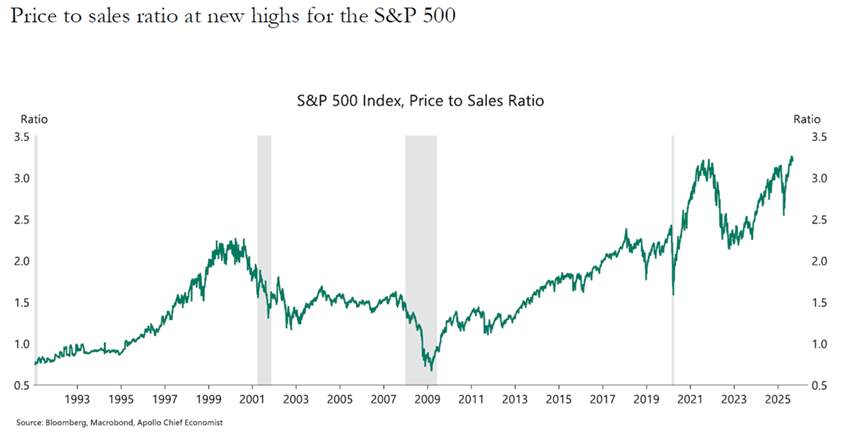
Admittedly, there is a difference today versus the tech bubble in 2000, in that the A.I. related companies today are generating earnings, whereas in 2000, many companies were not.
Companies Are Not Benefiting from A.I.
In a recent study from MIT where the survey interviewed 153 senior leaders across 52 organization, the summary of the study noted,
“Despite $30–40 billion in enterprise investment into GenAI, this report uncovers a surprising result in that 95% of organizations are getting zero return. The outcomes are so starkly divided across both buyers (enterprises, mid-market, SMBs) and builders (startups, vendors, consultancies) that we call it the GenAI Divide. Just 5% of integrated AI pilots are extracting millions in value, while the vast majority remain stuck with no measurable P&L impact.”
With all the hype around A.I. the MIT study found most companies in the study are not seeing profit improvement with implementation of A.I. resources. Given the current focus on A.I. and the strong and favorable stock price performance of many companies, might the projected benefits of A.I. be overstated? A.I. products and resources are real and likely not going away. However, it would not be surprising if the excitement of A.I. is leading to, at least in the a short term, an overbuild in data center capacity. This is important for investors as there are a small number of stocks in this area that are contributing the most to the indexes overall returns over the past 9-12 months. Having some exposure to this industry and some of the leading stocks makes sense; however, being overconcentrated in them might lead to an unanticipated shock in one’s portfolio value in the event there is a correction in this industry.
More By This Author:
Employment Market Appears To Be SofteningS&P 500 Index Buybacks Hit Record
Dogs Of The Dow Performance Ahead Of The MAG 7 Return
Disclosure: The firm and/or author's family long MSFT, GOOGL, AMZN, NVDA, AVGO.
Disclaimer: The information and content should not be construed as a recommendation to invest or trade in ...
more


